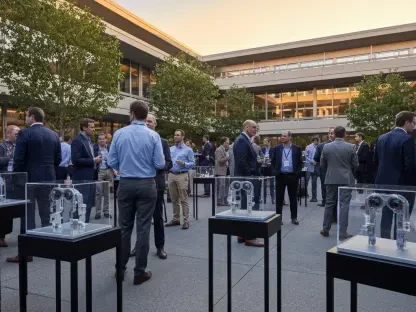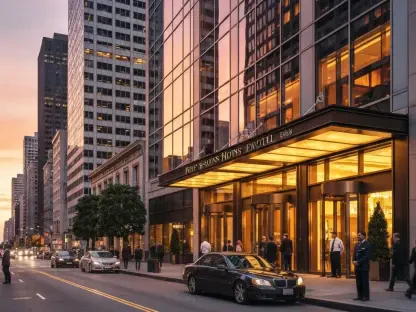The stadium venue industry in the UK plays a crucial role in enhancing the country’s sports and recreational infrastructure. Stadiums not only host sports events but also significantly contribute to the local economy and the cultural life of the community. Currently, the industry is gaining momentum, with an increasing number of venues seeking diverse revenue streams through events, conferences, and community activities. Stadium Experience, a not-for-profit association, supports over 70 UK stadium venues, offering networking and collaborative opportunities.
Overview of the Stadium Experience Industry
Stadium venues in the UK are vital fixtures that influence everything from local economic boosts to cultural enrichment. These venues cater to multiple functions, ranging from hosting sporting events to being the epicenter of concerts and community gatherings. This broad scope provides invaluable services that connect people, foster unity, and drive economic growth. Key players, such as football, rugby, and cricket stadiums, are pioneers in the field, dedicated to enhancing their service offerings and maintaining infrastructural eminence.
The industry’s significance is bolstered by the presence of influential entities that ensure competitive standards and innovation are key priorities. Institutions like Stadium Experience are at the forefront, providing an organized platform for collaboration and introductions among venues. Through strategic leadership, diverse voices, and shared knowledge, they pave the way for sustained industry growth and development.
Recent Trends and Growth Projections
Influential Trends in the Stadium Venue Industry
Technology continues to redefine the stadium experience, offering innovation and convenience to both operators and patrons. Trends include enhanced digital connectivity, advanced ticketing, and sustainable infrastructure. These advancements cater to modern audience behaviors, with patrons seeking more customized and interactive experiences. As technology integrates into venues, opportunities for personalized engagement and operational efficiency rise.
Beyond technological strides, the industry is also witnessing shifts in audience preferences. Patrons now increasingly demand holistic experiences, extending beyond traditional sports events. This shift opens new markets, encouraging venues to explore diverse event planning that includes concerts, festivals, and corporate gatherings. Revenue opportunities are becoming more diverse, fueling the need for strategic growth management.
Growth Metrics and Future Outlook
Recent statistics show a remarkable 38% growth in venue membership at Stadium Experience, highlighting the robust expansion trajectory of the industry. This increase indicates not only an uptake in participating venues but also a broader acceptance and trust in collaborative networks fostering mutual assistance. Future projections suggest steady growth as more stadiums recognize the potential of maximizing non-matchday revenue opportunities, aided by organizations like Stadium Experience offering rich resources and strategic guidance.
As the industry gears toward further broadening its scope, insights into consumer behavior, advancing technology, and emerging market demands set the stage for an encouraging and optimistic future. By aligning strategies with current trends, the stadium experience industry stands to benefit from both stronger stakeholder participation and broader consumer engagement.
Challenges and Opportunities in the Industry
Navigating the stadium venue industry presents distinctive challenges that range from regulatory compliance to integrating advanced technologies. Regulatory hurdles, often complex, require meticulous navigation to ensure venues operate legally while prioritizing the safety and satisfaction of patrons. Technological integration, while essential, presents hurdles related to infrastructural downtime and associated costs during implementation and transition phases.
However, overcoming these challenges offers ample opportunities. Embracing innovation and sustainability not only aligns with global trends but also enhances venue efficiency. Strategies that include adopting cutting-edge technologies, improving operational practices, and offering diversified services enable venues to respond better to market demands. The industry remains ripe for experimentation and growth, presenting a landscape where strategic leadership and collaboration can surmount challenges to unlock significant potential.
Regulatory Environment and Compliance
The regulatory landscape that governs stadium venues is intricate, demanding adherence to various laws and safety standards. Legislation focuses on ensuring patron security while emphasizing sustainability and environmental standards. Operators must navigate an evolving regulatory framework, responding to amendments in safety protocols, data protection, and sustainability measures.
Compliance remains a crucial component of operations, significantly influencing business practices. Adherence to regulations not only ensures legal protection but also enhances reputation and consumer trust. As the industry evolves, venues increasingly incorporate stringent security measures, reassessing and redefining their protocols to meet government standards and societal expectations.
Future Directions and Emerging Opportunities
The stadium venue industry is poised for transformative developments driven by innovation, consumer preferences, and global market changes. As technology introduces more efficient operational systems, venues will see enhanced interactivity and engagement at events. Simultaneously, changing consumer preferences demand that venues offer richer, more varied experiences, going beyond traditional uses to align with lifestyle and recreational trends.
Looking forward, there is a proliferation of opportunities for industry transformation. Key sectors for growth include technology integration that enhances user experience, sustainability initiatives that reduce operational footprints, and market diversification that targets a wider audience demographic. Stakeholders can capitalize on changing trends, pushing the boundaries of traditional venue utilization and diversifying the experience offerings.
Conclusion and Strategic Recommendations
The expansion of Stadium Experience’s Leadership Team underscores the industry’s commitment to embracing strategic leadership and knowledge-sharing vital for growth. As challenges and opportunities coexist, the need for innovative, knowledgeable partnerships becomes ever more critical. Stakeholders must look to harness technological advantages, address consumer demands, and remain compliant with evolving regulatory frameworks to drive sustainable development.
For a forward-thinking venue industry, investment prospects lie in technology, sustainability, and diversification. Strategic recommendations call for leveraging shared industry insights, fostering collaborations that highlight shared goals, and ensuring continuous adaptability to consumer expectations and technological advancements, ensuring robust and sustained growth. These collective actions will position stakeholders for a strategic advantage, aligning with market demands and fostering industry-wide progression.









